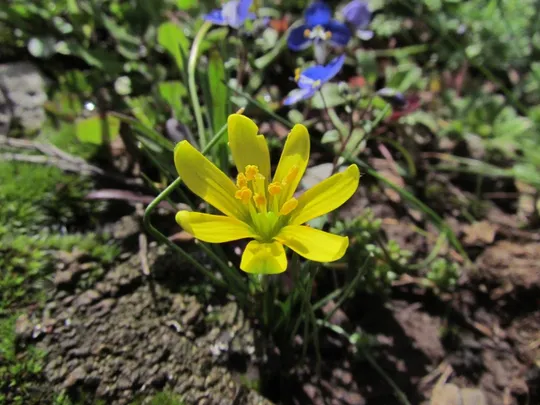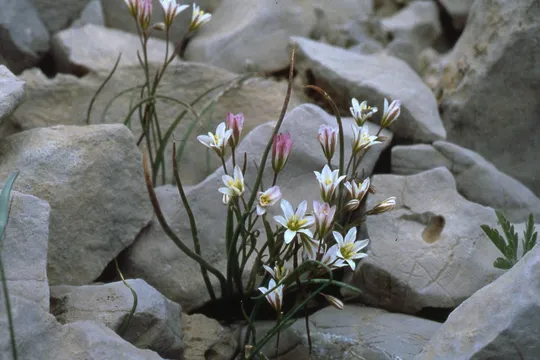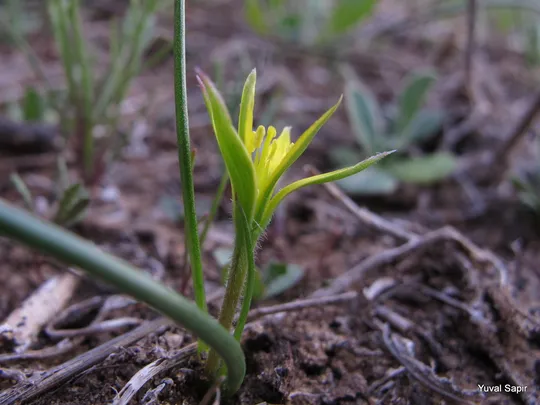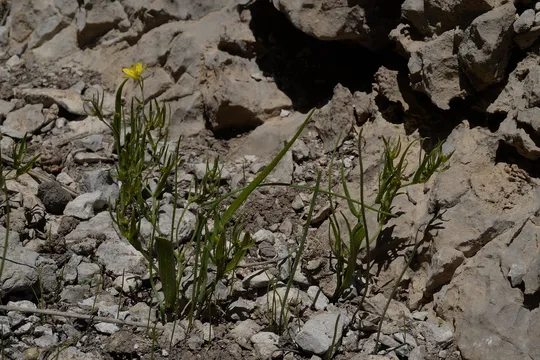Hairy Star of Bethlemen
Gagea villosa

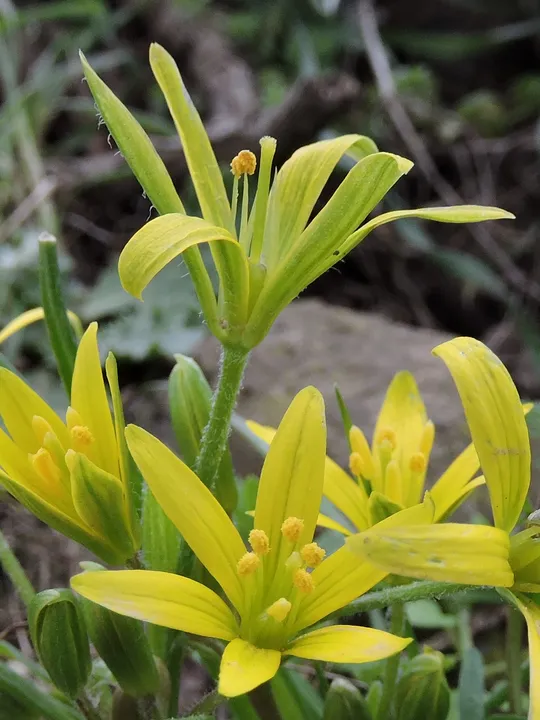
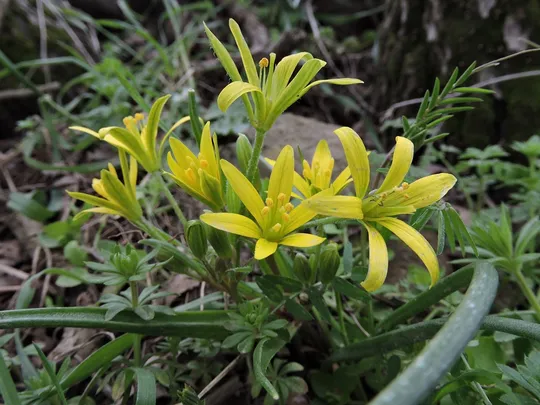
Gagea villosa currently grows in
five regions.
In two, the species is rare but stable (Upper Galilee and the northern Golan Heights) and in the other three, extremely rare and possibly extinct (Lower Galilee, Samaria and the Judean Mountains. Overall, 15 sites are known in Israel. In the Golan Heights, the
species grows in a number of sites from the Qunetra Valley to Mount Odem. In the Upper Galilee it was collected between
1952 and 1981 in the Meron
Block area. The
species was
not
found in the 1990-1991 rare species
survey. It was also never mentioned from
anywhere
else in the Upper Galilee! The species
was recorded only once from the Lower
Galilee in 1983, from
Alon Tabor, but was not found again during the 1993 survey. In Samaria, it
was
collected at three sites in the Ramallah –
Ba'al Hatsor area. In the Judean Mountains G. villosa was
known only from the Jerusalem area, there it was collected four times between 1938 and 1942 on Mount Scopus and in Bet HaKerem. There is a single record from En Arikh in 1969, but it has not been found there since, even though a plant survey was conducted in the region in 2000-2001. There are Rotem observations from the Carmel Coast and from the southern coastal
plain but they have to be verified, for
in the monograph on the genus Gagea in Israel (Heyn and Dafni, 1971, 1977), the
species was not recorded from these areas.
Fallow fields and edges of agricultural fields on clayish
valley soil.
For the genus –
see Gagea dayana.
Heyn and Dafni (1971, 1977) distinguish between two
varieties of G. villosa in Israel: G. villosa var. villosa
the typical variety, and G. villosa var. hermonis, whose inflorescence has few (2-6) flowers, with a smaller flower (10-16 mm) and are
missing or small bracteoles. Heyn and Dafni first described the taxon as a new species (Dafni 1970) and only subsequently reduced the status of the species to that of a
variety. The hermonis variety
is the most common species on Mount Hermon at altitudes of 1, 4000-1,700 meters on rocky
slopes and its habitat is different
from that of the typical villosa variety.
Gagea villosa
is a very rare plant, except in the northern Golan Heights, and is seriously
endangered in the other four regions in which it grows: the Upper Galilee, Lower Galilee, Judean Mountains and Samaria. The main reason for its extinction are habitat (heavy
soils in mountain valleys) degradation and
development.
The survey in the Mount Meron Block should
be repeated to locate Gagea villosa populations. Likewise, the Jerusalem
Hills should be searched to see if it is indeed extinct in the region. Two G. villosa populations in the Mount Meron
Block and in the Golan Heights (in the Odem Forest Reserve or in the Qunetra
Valley) should be demographically monitored.
Gagea villosa
is found in northern Mediterranean countries from
Spain to Turkey, Cyprus, Black Sea, Western and Central
Europe and Russia; in the Middle East – Syria, Lebanon, Northern Iraq, northwestern Iran, and Edom in Jordan.
Gagea villosa is a small geophyte, which was still common in Israel in the 1970s
in a relatively large number of sites on the central mountain
range and in the
Upper Galilee, but has since probably become extinct in the Galilee and the Jerusalem area. This is probably due
to the development
of the
valleys, the
abandonment of traditional farming methods and the increased use of chemical
pesticides. In the northern Golan Heights stable populations still remain. This
is a northern peripheral species
in Israel, whose
southernmost limit is the Jerusalem area. The variety hermonis should be
considered a separate taxon with an independent status of a subspecies. The typical subspecies is thus very rare,
very fragmented and seriously threatened.
Heyn, C. C. and Dafni, A. 1971. Studies in the genus Gagea (Liliaceae) species in Israel and neighbouring areas I. The Platyspermous species. Israel Journal of Botany 20: 214-233.
Heyn, C. C. and Dafni, A. 1977. Studies in the genus Gagea (Liliaceae) in Israel and neighbouring areas. II. The non-platyspermous species. Israel Journal of Botany 26: 147-159.
Current Occupancy Map
| 1000 squre meter pixel | 5000 squre meter pixel | 10000 squre meter pixel | |
|---|---|---|---|
| number of observations | 0 | 0 | 0 |
| in total pixels | 0 | 0 | 0 |
| Family | Liliaceae |
| Classification | On the endangered species list |
| Ecosystem | Mediterranean |
| Chorotype | Euro – Siberian, Mediterranean |
| Conservation Site | Mount Meron Block and Odem Forest |
| Rarity |
1
2
6
|
|---|---|
| Vulnerability |
0
3
4
|
| Attractiveness |
0
1
4
|
| Endemism |
0
0
4
|
| Red number |
1
3.7
10
|
| Peripherality | N |
| IUCN category | DD EW EX LC CR EN VU NT |
| Threat Definition according to the red book | Vulnerable |
 Based on:
Based on:
